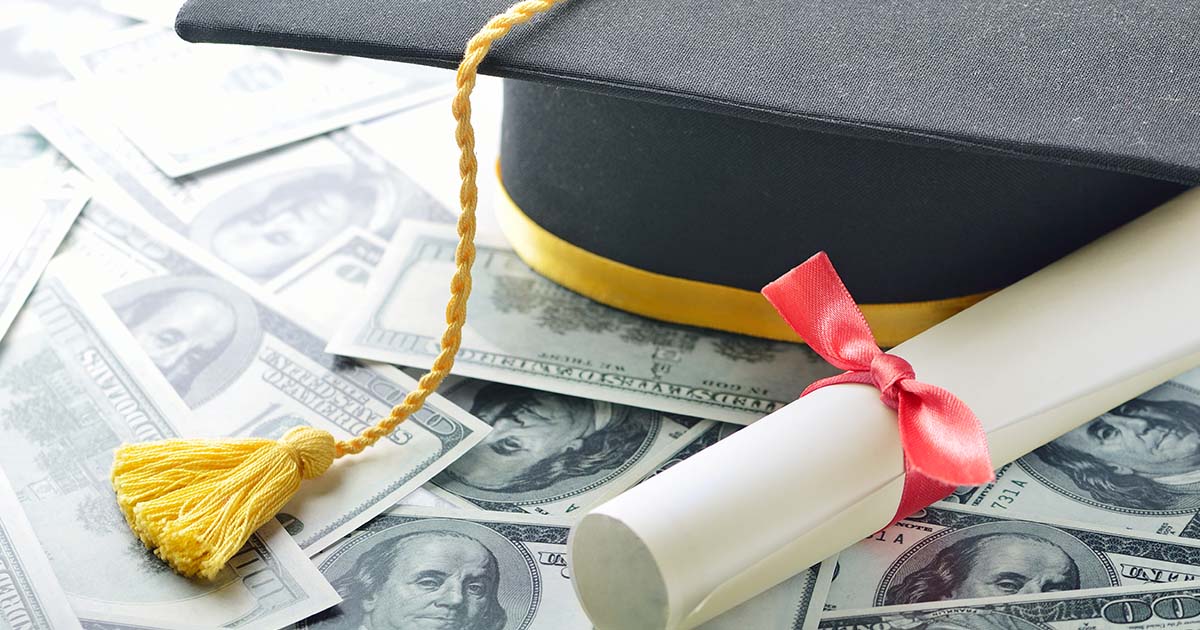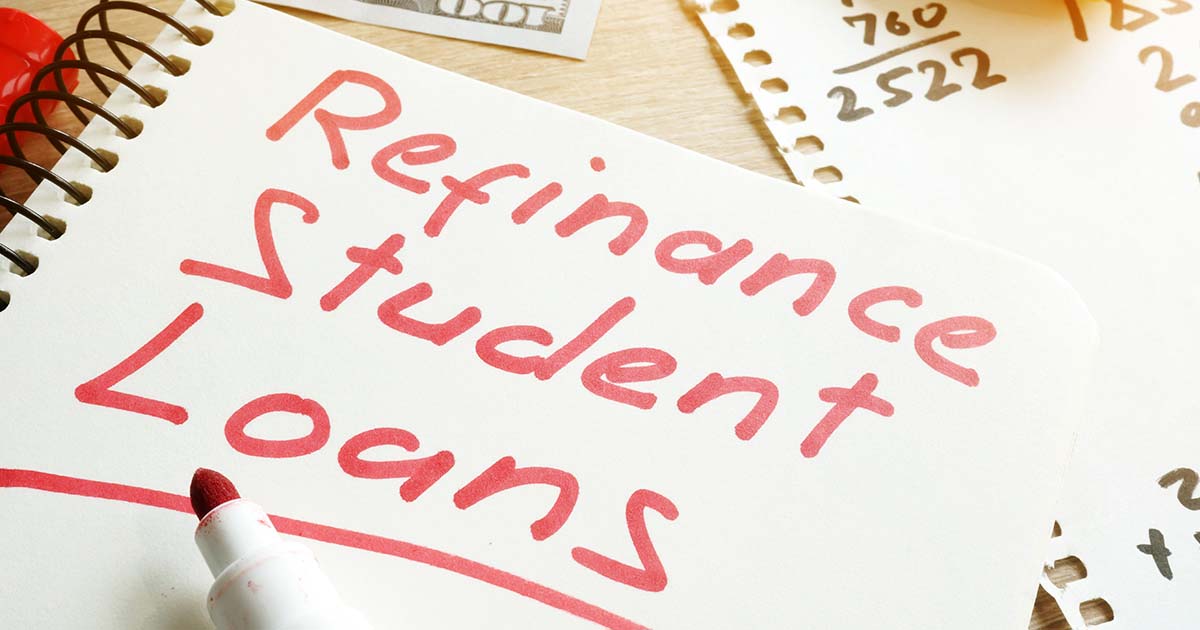Dental School Debt Repayment: Smart Strategies for Your Future
It’s common for an engagement with a new client to begin in the late summer or early autumn. This is when most new dental school graduates are fully licensed, employed in some capacity, and are trying to get financially situated. Also, impending student loan payments will typically commence 6 months following graduation – October or November for most of the new graduates.
Inflation Affects Dental School Loan Debt
It’s no secret the cost of higher education, including dental school, has outpaced inflation, even before the high-inflation environment our country is currently experiencing. It’s interesting to note that during my first year in the business of advising dentists (2007), the average dental school debt load was $172,627. In 2019, however, that debt load ballooned to $292,169. As a practical matter, most of my clients graduate in excess of $450,000 of student loan debt at 7.9% interest!

The student loan “epidemic” has become something of a political football in this country with various politicians teasing various plans for relief. The growth in average student loan debt from 2007-2019 was approximately a 4.5% average annual increase. Over the same period (2007-2019), inflation as measured by Consumer Price Index only averaged 1.76% annually!
What makes a bad situation worse, is that even though the Federal Reserve had kept interest rates low during that period, rates on graduate loans continued to increase. The growing cost of dental education, coupled with the increase in interest rates, makes student loan debt more burdensome for today’s graduates than for any previous generation of dentists.
Consider Dental Loan Debt as an Investment
Obviously, graduating into the current student debt environment isn’t ideal. However, there is little that can be done about it. I encourage clients to view their student loans as the investment they made in themselves and their career. That investment will pay handsome dividends over time; it’s just a matter of approaching the situation tactically. There are many ways to approach student loans.
Common Approaches to Student Debt
What is your attitude toward debt?
This is the first question I ask a client when we begin discussing student loan strategy.
Pay off Student Debt as Soon as Possible
Some dentists are very debt adverse and wish to unburden themselves from the student loan debt as soon as possible. These are the dentists that often live exceptionally modestly for the first several years out of school so as to be able to pay their student loans off as quickly as possible. Monthly student loan payments for dentists in this situation are often in excess of $5,400/month!
Be Flexible with Student Loan Repayment
Not all dentists are meant to be this aggressive in paying down debt. Some don’t find the debt load to be that stressful and instead are more interested in allocating their discretionary income toward financial goals like upgrading their home, building their investment portfolio or otherwise improving their quality of life.
Dentists from this school of thought will often take longer to pay their student loans off but are willing to trade the time in debt and increased interest cost for having more flexibility with their cash on a month-to-month basis. The following is a side-by-side comparison of loan payments for $450,000 of student debt at 7.9% paid off in 10 years vs. 20 years.
|
10 Year |
20 Year |
| Monthly Payment |
$5,436 |
$3,736 |
| Total Interest Paid |
$202,320 |
$446,645 |
How Student Loans Affects Buying a Dental Practice
It’s not uncommon for an associate dentist to wonder how their student loan debt will affect their ability to eventually buy a dental practice. Some even go as far as to avoid practice ownership because they can’t imagine taking on more debt than they already have.
At first glance that may seem sensible – the dentist has student loans and possibly a mortgage by this point in their life. The idea of adding the additional debt of a practice acquisition and practice building acquisition may make them feel like they are setting themselves further behind, as opposed to making financial progress. In reality, nothing could be further from the truth!
Wealth is Built Through Dental Practice Ownership
While it may seem like adding more debt to their lives is a foolish move for a young dentist, in reality, the best wealth is built in dentistry through practice ownership! From an income perspective, a practicing owner of a dental practice makes 2-2.5x what an associate dentist in the same practice makes. Unfortunately for the associate, this compensation multiple never really changes.
Entrepreneurial Profit
I often coach my clients to embrace the concept of “entrepreneurial profit,” the income a dental practice owner makes over what they would make as an associate in the same office doing the same work.
In other words, if a dental practice were owned by an arm’s length investor that didn’t otherwise work in the office, produce dentistry, or provide any management, the profit that the investor would take from the practice would be entrepreneurial profit.
An example of Entrepreneurial Profit:
A single-doctor practice has annual revenue of $800,000
70% DDS: $560,000
30% HYG: $240,000
Overhead expenses are: $480,000 (60%)
Profit: $320,000
An associate in a practice generating $560,000 of revenue in dentistry would likely be paid 30% of that or $168,000. The entrepreneurial profit would be ($320,000 of profit – $168,000 in DDS compensation pre-tax) = $152,000.
Using Entrepreneurial Profit to Pay Down Student Loan Debt
To take it one step further, a practice that is doing $800,000 would sell for around 70% of revenue or $560,000. A loan of $610,000 ($560,000 + $50,000 in working capital), would have a monthly payment (10 years at 5.5% interest) of $6,620.
If the owner doctor paid themselves like they were an associate dentist ($168,000), and used $79,441 ($6,620×12) of the $152,000 in entrepreneurial profit. An additional ~$72,000 would be leftover and could be used toward improving their lifestyle, building their wealth, paying taxes, or paying down student loans.

Using Cash to Pay Down Student Debt
It’s recommended dentists with student loan debt buy a dental practice to increase their income to a meaningful level and use entrepreneurial profit to pay their student loans aggressively.
Once the practice loan is paid off, the owner dentist can take even more cash out of the practice, resulting in a ~$79,000 per year “pay raise” once the practice is owned free of debt!
This doesn’t mean that a dentist needs to own several practices or create a mini-DSO. However, it does mean that they need to be capturing as much income as possible (entrepreneurial profit), building equity in asset(s) (the practice and building), and using cash to pay down debts (like student loans), and increase assets (like investment portfolios, or other investment endeavors).
Dental School Debt Repayment Options
Income Based Repayment
I’ve discussed student loan repayment on conventional repayment models (10 year vs. 20 years at 7.9% interest). However, some of the most compelling student loan repayment options available to dentists are income-based repayment plans.
These differ from the more conventional alternatives in that they aren’t loans designed to pay down to a $0 balance over time. Instead, income-based repayment is designed such that a borrower’s monthly payment is calculated based on their income, family size, and student debt load.
Once the borrower makes a certain number of payments, typically 240-300 (20-25 years), whatever isn’t paid off is forgiven.
A payment calculated based on income is often considerably less than a payment based on income, making this an attractive option for new graduates working as associates and not earning higher incomes with entrepreneurial profit.
The table below shows payments owed on a $450,000 student loan at 7.9% by a single dentist making $168,000 annually.
|
10 Year |
20 Year |
Income Driven Repayment |
Debt Forgiveness Tax Account |
Total IDR and Debt Forgiveness |
| Monthly Payment |
$5,436 |
$3,736 |
$1,230 |
$750 |
$1,980 |
| Total Paid |
$652,319 |
$896,645 |
$295,200 |
$180,000 |
$475,200 |
As you can see, the payments made on income-based programs are lower and will not completely pay off the loan before the 20-25 year time frame is up. In fact, often the payment won’t even be enough to pay the interest accruing on the loan, let alone pay any principal down to reduce the debt.
While it may seem counterintuitive, an income-based loan isn’t designed to be paid off, it’s designed to be at least somewhat forgiven.
For this example, a borrower using this version of income-based repayment, the first year will have $35,550 interest. However, since the payment is based on income, the borrower will only make $14,760 in payments, so $20,790 in interest is unpaid in the first year.
The unpaid interest is added to the balance of the loan; however, interest does not compound on this additional debt.
Contingent-Based Income Repayment
Before using an income-contingent repayment program a borrower must consider the tax consequence. Under current legislation, forgiven debt is considered taxable income. Assuming that will continue to be the case, a borrower should be setting aside funds every month while they are on an income-based program to be prepared to pay the tax bill upon forgiveness. It’s most advisable to invest and grow these savings.
| 20 Year Repayment |
Total |
| Monthly Payments |
$1,230 |
| Total Monthly Payments |
$295,200 |
| Total Balance Forgiven |
$865,800 |
| Taxes Due (37%) |
$320,346 |
| Total Paid (incl. tax on forgiven debt) |
$615,546 |
| Monthly Savings for Debt Forgiven |
$750 |
Even considering the tax on the forgiven debt, the income-based repayment structure results in the fewest total dollars out of pocket directed toward student loan debt. Compare the total paid of $615,546 to the total monthly payments on the 10 or 20-year repayment structure in the table below.
|
10 Year |
20 Year |
| Monthly Payments |
$5,436 |
$3,736 |
| Total Paid (Principal + Interest) |
$652,319 |
$896,645 |
When to Consider an Income Based Student Loan Repayment Plan
Income based repayment isn’t right for every borrower. It depends on the career outlook, tax situation, and debt attitude of the buyer. However, it’s a powerful strategy under the right circumstances.
Borrowers considering income-based repayment should remember that they will need to “re-certify” every year to stay on the program. The recertification process includes submitting income information (or having the student loan servicer pull it from IRS records) to calculate the next year’s monthly payment amount.
Payment amounts can increase as the borrower’s income increases. The example above assumes a level income of $168,000 through the entire repayment timeline.
Income-Based Repayment and Practice Acquisition
One of the best reasons to use an income-based repayment plan is to ease cash flow strain when purchasing a practice.
A well-advised buyer knows that the right practice to buy is the one that brings in enough revenue to pay all operational overhead, including staff wages, pay the owner a reasonable salary (at least what they would make as an associate doing the same work), and make the payment back to the lender for the funds borrowed to buy it.
The higher a buyer’s student loan required payment, the larger and often more expensive a practice they will need to buy in order to generate the income needed to make required payments.
Managing Stress on an Income Based Repayment Plan
Using income-based repayment plans can also help ease stress during a doctor’s first few years as a practice owner. Many buyers don’t have much experience managing business cash flow, budgeting for capital improvements, or paying taxes as a business owner.
It can take them a year or two to get dental practice cash flow. Lower student loan payments made on income-based repayment plan can help alleviate the stress. It should also be noted that business owner’s tax advantage of various tax-planning strategies will help reduce taxable income.
These strategies also help keep income-based payments low as payments are a function of adjusted gross income relative to the poverty level for a given family size.
Refinancing Student Loans
For borrowers that are not comfortable in an income-based repayment plan, several companies in the marketplace offer student loan refinancing. As the name would imply, this is where a borrower makes an application for a loan in the amount of their outstanding student loan debt.

If approved, lender will offer to refinance the student loans, often at lower interest rates for various terms, depending on the needs of the borrower. The best candidates for refinancing have been out of dental school or residency for at least 2 years, have good credit, and are in a stable income situation.
The stability of income is paramount for a borrower refinancing because this loan is typically for a fixed amount (not based on income), and with varying hardship relief as opposed to the Federal Student loan servicer which has more option for flexibility in working with borrowers experiencing financial difficulties.
What to Consider When Refinancing Student Loans
Since the required payment is often not enough to pay the monthly interest on the student loan debt, as mentioned, the debt itself is actually growing. Seeing the debt grow in total is highly unmotivating for the dentist as they are parting with cash every month to make payments and contribute to savings for tax on forgiven debt.
In spite of the income-based repayment plan being mathematically the right answer, many borrowers can’t tolerate seeing debt grow as they make payments.
To alleviate this, the borrower will refinance the student loan debt once they are financially stable enough to do so and will select terms that give them a similar payment to the refinancer as they were paying in payments + side savings when they were on an income-based repayment plan.
As mentioned, this may not be mathematically the right answer, but gives many borrowers peace of mind as far as the loans being paid off, regardless of tax rates or changes in legislation.
Commit to a Dental School Debt Repayment Plan
There is no cookie-cutter/one-size-fits-all approach to student debt. A solid student loan strategy starts with the borrower’s attitude toward debt and also gives consideration to other financial goals, as well as incorporates an awareness of the overall financial situation and career outlook.
The borrower should have commitment to whatever strategy they deploy, but also be ready to pivot if circumstances change or planning opportunities present themselves.
Finally, it’s my hope for all of my clients that they maximize the financial and non-financial rewards the profession of dentistry can bring to their own lives as well as the lives of their patients!
Sources
https://educationdata.org/average-dental-school-debt
https://www.in2013dollars.com/us/inflation/2007?endYear=2019&amount=1
Theodore C. Schumann II
MBA, MSF, CFP, AIF, Partner
The DBS Companies
This entry was posted on Thursday, September 8th, 2022 by Theodore C. Schumann II MBA, MSF, CFP, AIF, Partner and is filed under
Buying, Financing,




